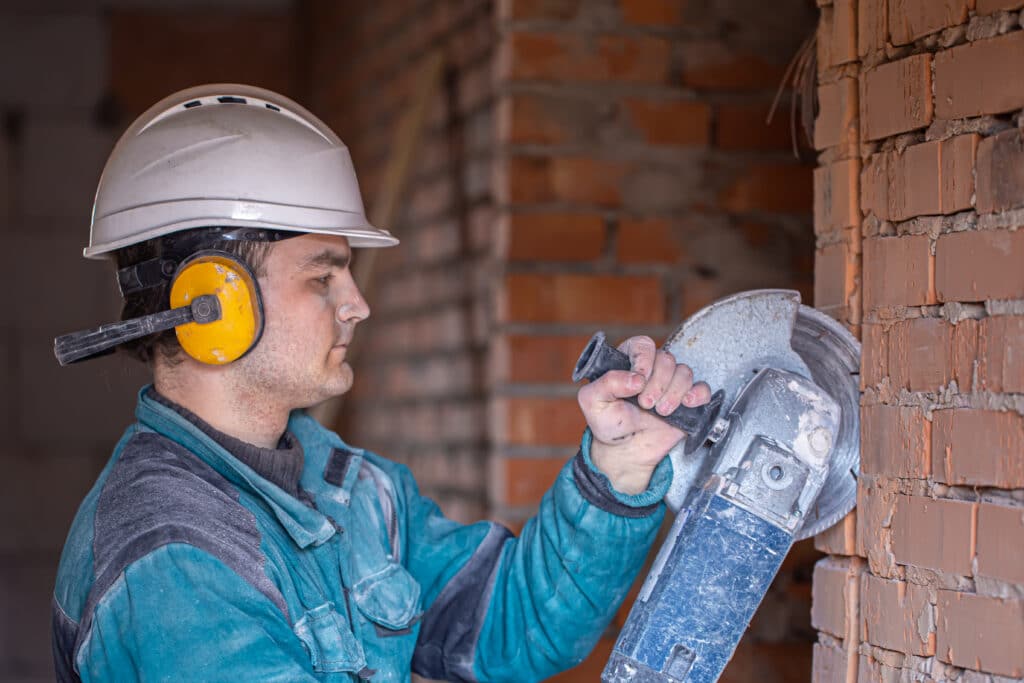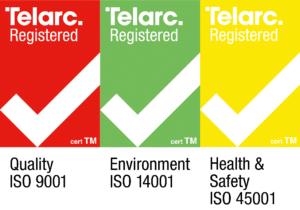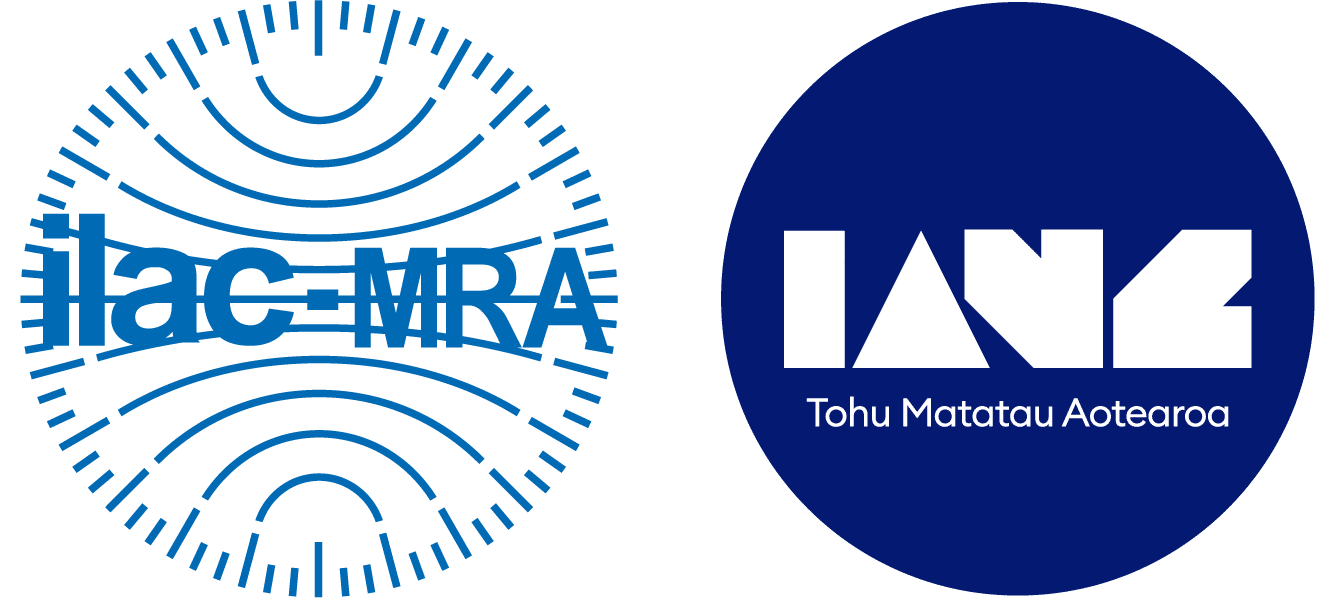At Aerem, we are committed to creating a safer work environment for you and your employees. Our silica dust testing services are designed to help you understand and monitor respirable crystalline silica (RCS) levels in your workplace, ensuring the health and safety of your team.
When materials that contain crystalline silica are cut, drilled, or disturbed, they release fine dust particles into the air. These respirable particles are a significant health hazard for workers exposed to them. The key to prevention is recognising the presence of silica in materials such as:
Under the Health and Safety at Work (General Risk and Workplace Management) Regulations 2016:

Worksafe reported that “the current New Zealand Workplace Exposure Standard (WES) for RCS (quartz) is 0.05 mg/m3. This value was reduced from 0.1 mg/m3.” This figure is under constant review to ensure worker safety. This limit is in place to prevent accelerated silicosis and other health effects associated with long-term exposure. Employers are obligated to carry out health and air monitoring to determine whether workplace exposure standards are being met and to implement control measures as necessary.

Reducing the risk of respirable crystalline silica involves more than just monitoring; it requires implementing safety measures, including the use of appropriate personal protective equipment (PPE). The type of PPE recommended can vary depending on the levels of silica dust exposure but may include respirators, gloves, and protective clothing. Our silica testing services help identify the necessary PPE to ensure workers’ lung function remains uncompromised.
We are dedicated to ensuring that the risk of respirable crystalline silica is managed effectively in your workplace. From risk assessments to ongoing silica dust monitoring, our team provides the support and expertise needed to maintain a safe and compliant work environment.
Contact us today to discuss how we can assist with respirable crystalline silica testing needs and help protect your most valuable asset—your workers.
You can find more information here on silica dust in the workplace a guide from Worksafe.
At Aerem, our team comprises highly skilled professionals with extensive experience in occupational health and safety, particularly in managing the risks associated with silica dust. Their expertise ensures that our testing and analysis are accurate and align with the latest health and safety standards, offering clients reliable insights into their workplace conditions.
We provide a full spectrum of silica dust testing services, including air monitoring and analysis, designed to address your workplace safety requirements. This approach enables us to identify potential risks and recommend a healthier, safer work environment.
Utilising the latest testing methods and equipment, we deliver precise and reliable results for silica dust measurement. Our commitment to advanced technology means we can offer actionable insights faster, aiding in effectively managing silica dust hazards in the workplace.
Customer satisfaction is at the core of everything we do at Aerem. We strive to exceed expectations by offering personalised service and support, ensuring our clients are well-informed and confident in managing silica dust risks throughout the testing process.
During the consultation phase, our experienced team engages with you to understand your workplace environment, operations, and concerns regarding silica dust exposure. We discuss your industry, materials used, current safety protocols, and any previous testing or mitigation efforts. This discussion helps us tailor our testing approach to your needs and ensure effective identification of potential hazards.
Our team use personal sampling pumps to detect if there is silica exposure. These pumps are positioned on the worker’s belt, while the sampling head is carefully placed within the worker’s breathing zone (a 30 cm radius from the center of the nose) to ensure an accurate representation of exposure. The sampling will be conducted over the entire work shift to comprehensively assess silica dust levels across different work environments.
Upon completion, the collected samples are analysed at a our certified laboratory, enabling us to accurately determine the levels of respirable dust and respirable crystalline silica dust. Our meticulous approach to sample collection is vital for generating reliable data and precisely identifying potential hazards.
Upon completion of the analysis, we compile the findings into detailed reports outlining the results of the silica testing. Our reports are clear, concise, and easy to understand, providing comprehensive information about silica dust levels, potential hazards, compliance status with regulatory standards, and recommended actions. Our goal is to empower you with the knowledge needed to make informed decisions and take proactive measures to protect employee health.
In addition to presenting test results, we offer tailored recommendations for mitigating identified silica exposure risks. Drawing on our expertise, we provide practical guidance on implementing control measures and best practices to reduce silica dust levels and enhance workplace safety. Whether it’s improving ventilation, implementing engineering controls, enhancing PPE usage, or modifying work processes, we work with you to develop effective risk mitigation strategies aligned with your needs.
Our commitment to safety extends beyond delivering test results and recommendations. We provide ongoing support to ensure your workplace remains safe and compliant. Our team is available to answer questions, clarify recommendations, and provide guidance on implementing risk control measures. We believe in fostering a collaborative partnership and are dedicated to supporting you every step of the way toward a safer work environment.
Highly recommend this business! Thorough and responded immediately to all my questions. Great customer service. All the best Aerem Team. Faafetai
Turi Leilua
Thanks Jane, Mani and all the Team at Aerem super prompt and efficient service as always, great company to work with.
David Young
Great company with an awesome and friendly team behind it. Highly recommended to anyone who is seeking their service.
Sophia Hemaloto
Silica dust, also known as respirable crystalline silica (RCS), is a fine particulate matter generated during various industrial processes like cutting, drilling, or grinding materials such as sand, concrete, stone, and bricks. When inhaled, silica dust particles can penetrate deep into the lungs, leading to serious health issues such as silicosis, lung cancer, and respiratory diseases.
Silica dust testing should be conducted regularly, especially in workplaces where silica exposure is likely. Factors such as changes in work processes, introduction of new materials, and workplace conditions can affect silica dust levels. It’s advisable to conduct testing periodically and whenever there are significant changes in the workplace environment or operations.
Under the Health and Safety at Work (General Risk and Workplace Management) Regulations 2016, employers have a duty to manage risks associated with hazardous substances, including silica dust. They must ensure that workers are not exposed to silica dust levels exceeding prescribed exposure standards. Compliance with workplace exposure standards, such as the New Zealand Workplace Exposure Standard (WES) for RCS, is essential to protect worker health and safety.
The duration of the testing process depends on factors such as the size of the workplace, the number of sampling locations, and the analysis method used. Typically, sample collection can be completed within a day, followed by laboratory analysis, which may take a few days to a week. Once the analysis is complete, you’ll receive detailed reports outlining the test results and recommendations for mitigating risks.
Welcome to Aerem. Our consultants will provide you with a initial free consultation. Our company goal is to provide you with the best advice possible, with regard to managing or removing hazardous substances.



